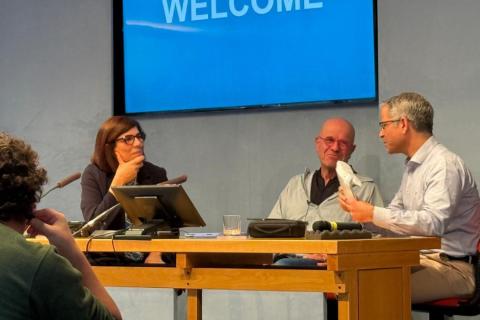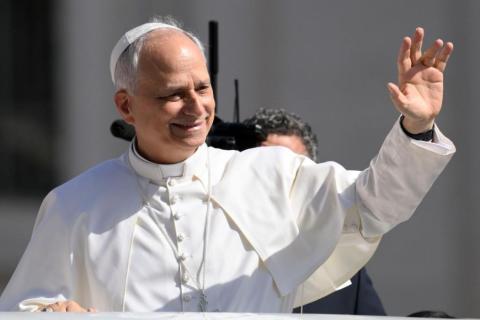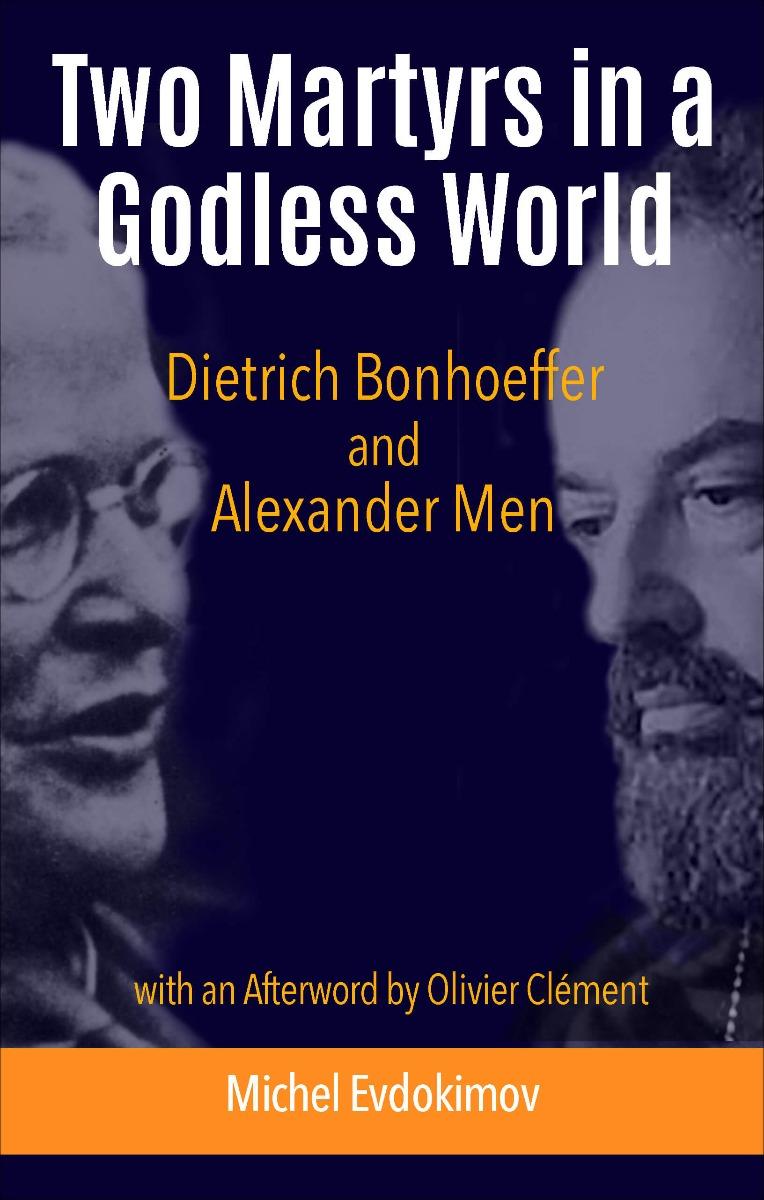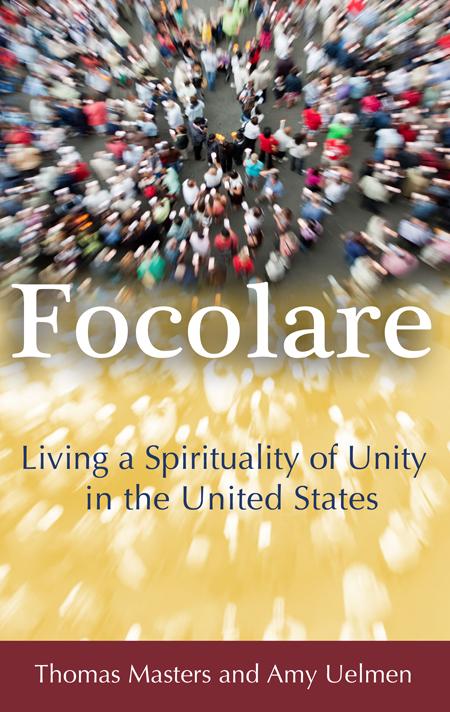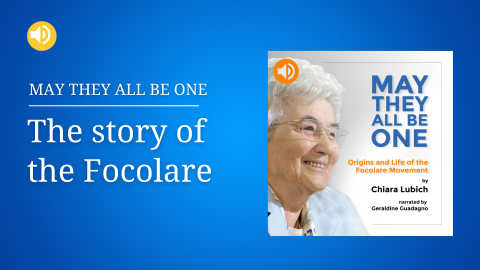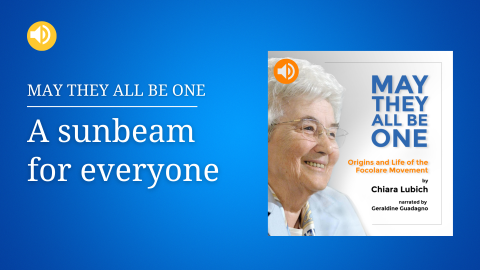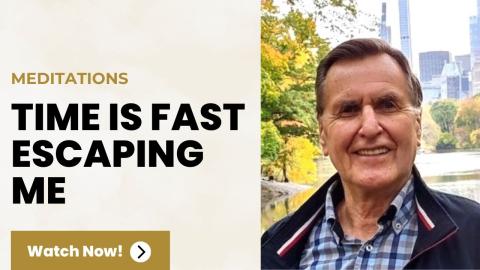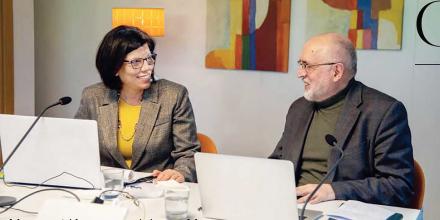First cities, then Europe and the world; Honorary citizenships for Focolare founder Chiara Lubich, fellowship among European movements, connecting with Muslims and Hindus. Chiara Lubich was founder and first president of the Focolare Movement, and a prolific writer. We continue to celebrate the centennial of her birth (1920) by covering key moments in her life. Part 19: 1997–2004
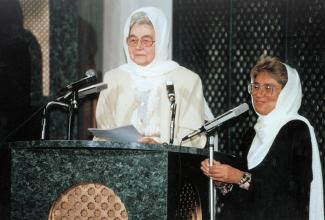
In the 1990s the Focolare reached maturity, and for Chiara these were years of intense activity. She visited continents, received doctorates, honorary degrees, acknowledgments and citizenships.
One happened in Rome on January 22, 2000, her 80th birthday. In her address at Capitoline Hill, Chiara mentioned her dream—that the capital city become “a model of unity for the whole world.” She would launch similar initiatives in other major cities, such as “Golden Prague,” “Genoa the Lantern,” “Ardent Trent.”
As the model for these, she suggested one of her writings from 1958, “One city is not enough,” in which she explains how to transform a city with the spirit of the Gospel.
On the eve of Pentecost Sunday 1998, in St. Peter’s Square, Pope John Paul II hosted a gathering of movements that had been born in the 20th century. He affirmed that they represent the answer, brought about by the Holy Spirit, to the challenges of today’s world. Their two characteristics—institutional and charismatic—are both equally essential in the Church. There Chiara confirmed the Focolare’s commitment to work for an ever-greater fellowship among the movements.
On October 31, 1999, in Augsburg, Germany, the Joint Declaration on the Doctrine of Justification addressed the reason for division between Lutherans and Catholics. Present at this most-important event were also Chiara Lubich, Andrea Riccardi (the founder of the Sant'Egidio movement) and 40 leaders of 15 movements that had begun in the Evangelical churches.
The evening of the signing ceremony, an event was held at the Ecumenical Life Center of Ottmaring, located near Augsburg. For some 30 years, a vibrant fellowship had been developing among Evangelical leaders there at the center and another 100 leaders of movements, communities and Evangelical endeavors.
A strong presence of the Holy Spirit was felt at this event, and among the participants there came about such a deep mutual understanding that they quickly reached the conviction that the Catholic and Evangelical movements had to proceed together.
The journey in the years that followed can be seen as successive steps toward unity, with respect of the freedom and diversity of each group.
In December 2001 an alliance of reciprocal love was made among 800 directors of more than fifty Catholic and Evangelical movements. Later an additional 300 ecclesial groups joined.
As a follow-up to this, some leaders of German movements came to Rocca di Papa outside Rome to meet with Chiara. Their goal was to understand the consequences of the fact that the alliance was not only among people, but also among movements. Chiara answered with a proposal, “Let’s do something together for Europe!”
On May 8, 2004, in Stuttgart, Germany, 9,000 representatives of 150 movements and communities came together, including Anglicans, Orthodox and groups of non-denominational churches, representing practically every European country, with representatives of other continents as well. Their fellowship united people journeying together toward a “Europe of the Spirit,” specifically collaborating for the common good.
During those years, Chiara visited different continents, responding to invitations extended to her by various people who had been touched by her message and her witness.
Imam W. D. Mohammed was the founder of the American Society of Muslims, with close to 2 million members in the U.S. Struck by the fact that Muslims who had come in contact with the Focolare rediscovered the roots of their faith and returned to the practice of the five pillars of Islam, in 1997 the imam invited Chiara to address his followers at the Malcolm Shabazz Mosque in Harlem, New York. More than 1,000 Muslims crowded the prayer hall and were connected by loudspeakers outside in the street, which was closed off to traffic.
Chiara was the first white Christian woman to speak at the mosque, sharing her experiences regarding God’s providential intervention in her life and explaining the evangelical Art of Loving, underscoring the Golden Rule in its Islamic version.
Imam Mohammed commented, “Diversity among us gives unity its legs, wheels and movement.”
Chiara and Imam Mohammed formulated a pact in the name of the one God to work together for peace and unity in the world.
In 2001 Chiara traveled to Coimbatore in India, where she had been invited by the Aram family, whom she had met through the World Conference of Religions and Peace. There she received the Defender of Peace Award, since she, as the citation states, “personifies and gives that message of peace and unity that lies at the heart of Gandhian philosophy.”
A Hindu teacher commented: “As long as there will be people like Chiara, God will be with us, and one day the earth will be like heaven.”
In India
“The spirituality of unity lends itself well to the practice of inculturation, because the spirituality of unity requires that we make ourselves one with the other. This means on our part learning how to listen, how to set aside our ego, so that the others can express their culture, their way of thinking, the concepts of their religion, their convictions. By loving, by making ourselves one with others, we can learn much.”
Mumbai, January 14, 2001
Europe, a family of brotherly nations
“Our inspiration lies in the testament of Jesus, his priestly prayer to the Father, ‘that all may be one.’ This prayer clearly shows us that the unity of the human family, as part of God’s plan since the dawn of creation, can overcome glaring divisions, not only territorial ones, but also those that are the result of political choices, of ethnic, religious and linguistic conditions.”
Stuttgart, May 8, 2004


